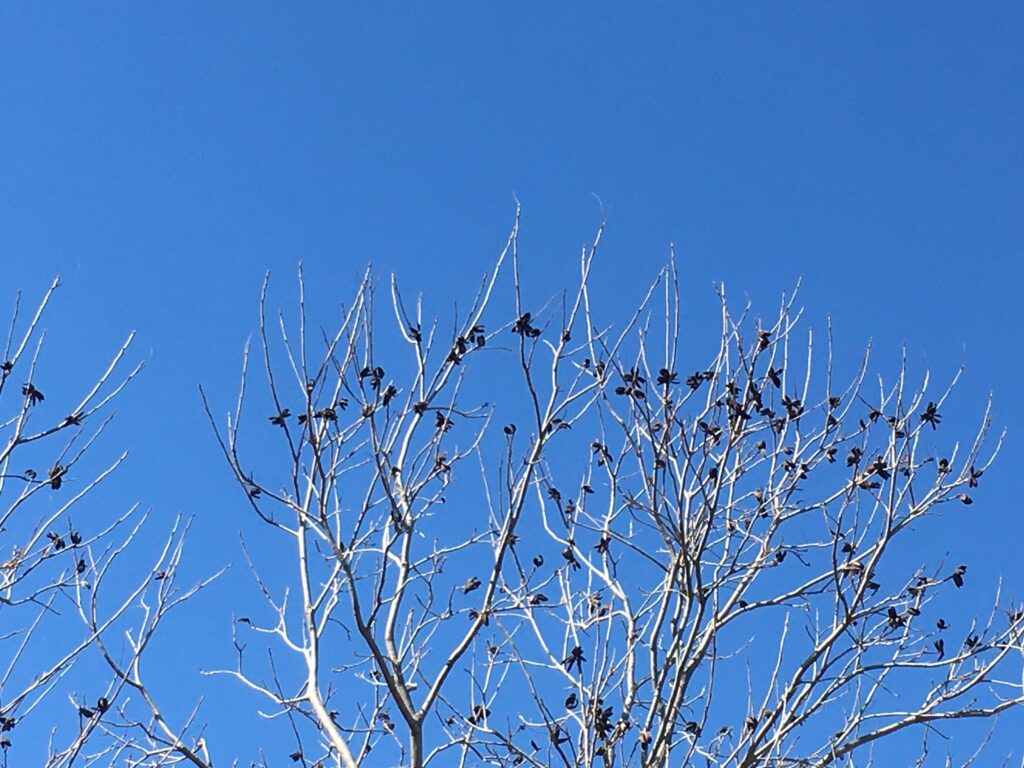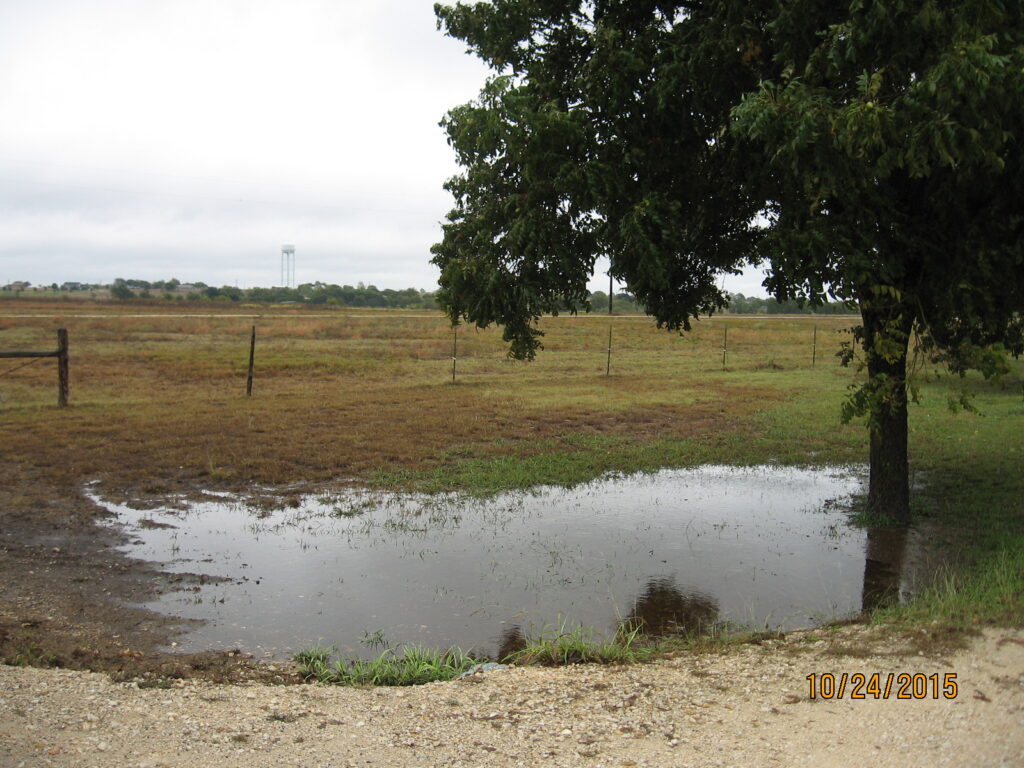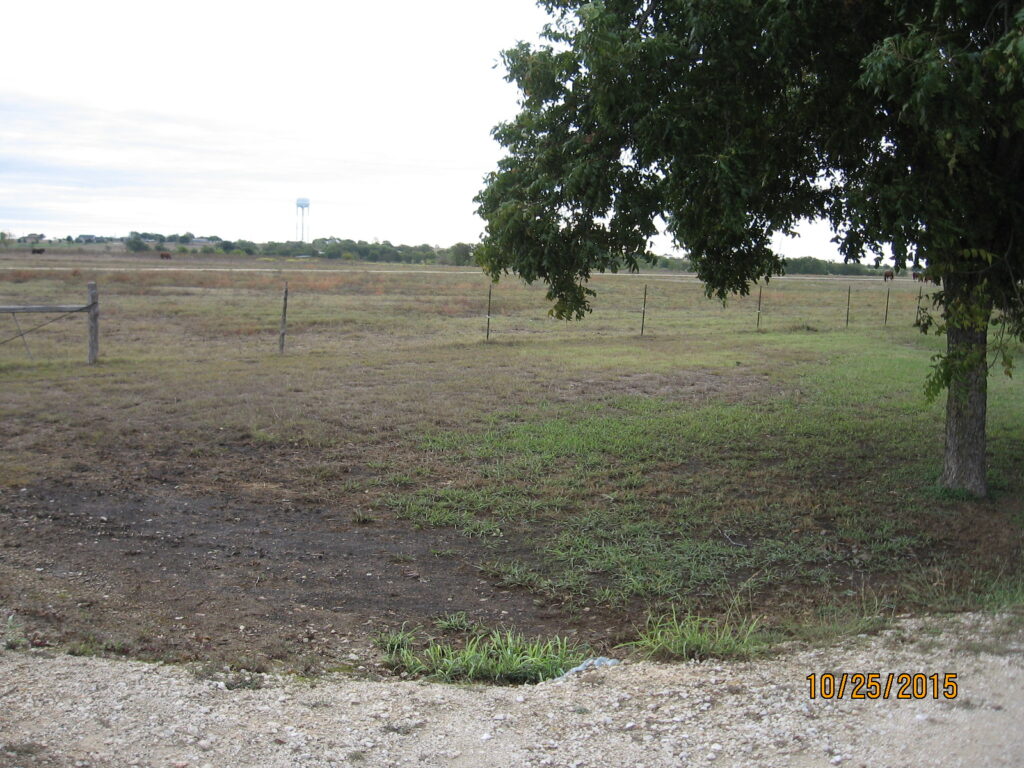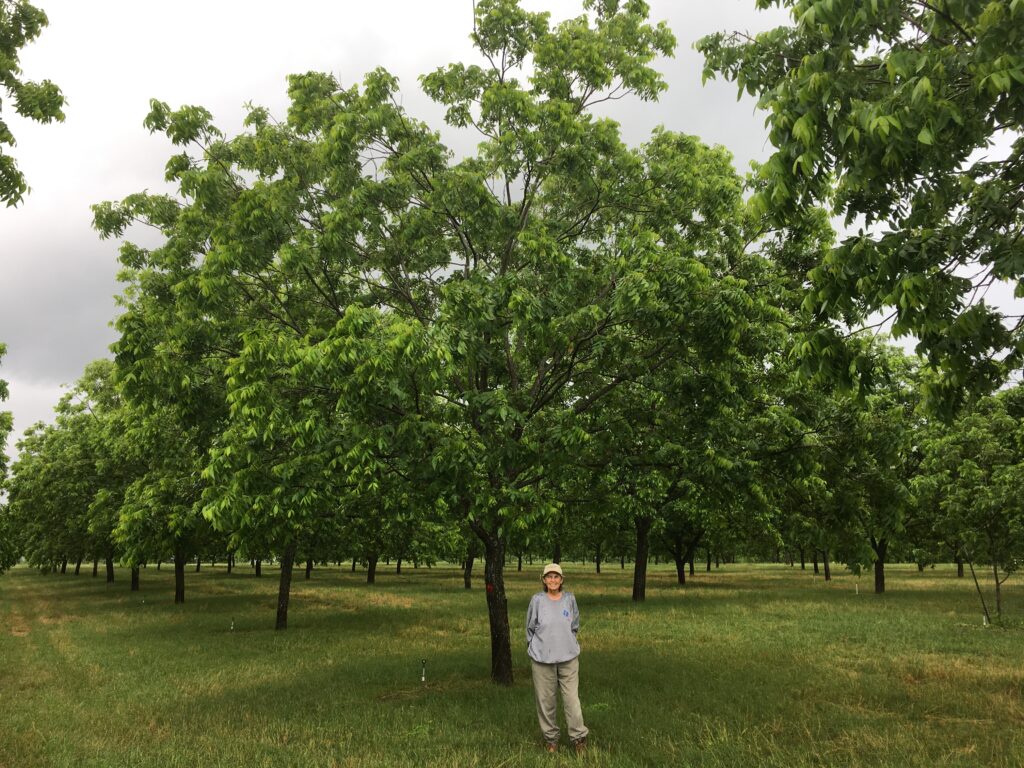How we learned to grow pecans together
I first met Betsy Ross Builta at a farmers market in Georgetown, Texas in 2001 or 2002. My wife, Marilyn, and I were still in the lift-off of our new pecan careers and knew little about either growing or selling pecans. Betsy was selling her grass-fed beef and had some big ideas.
Betsy talked to every grower in the market touting the benefits of soil microbiology — the soil food web. My response to her overture was the same as all the others. “I don’t know why I need that.” This was a true statement firmly rooted in ignorance rather than any horticultural prejudice.
Prior to meeting Betsy that first time, I had taken the pecan short course at Texas A&M on the advice of our county ag agent. He had advised against trying pecans as the soil and location were both unsuitable for commercial pecan production. A true statement. At the first day of the short course, I asked the head of the pecan program if he would help me restore my dilapidated orchard. He asked its location and, when told, assured me I was wasting my time. And he would not waste any of his. The problem was the shallow, blackland clay soil, which is a far cry from the deep, well-drained, mineral-rich alluvial soils recommended for pecans.
But another (successful) local grower was more positive and advised that “hard work and diligence” would lead to pecan crops. We listened to our neighbor and persisted. But after a few years of following the standard advice offered by the Extension Service, it became clear that we could not achieve financial success. I decided that we were wasting our time — using the recommended management system. Rather than giving up, we needed to find a better way.

One Saturday in 2004 we stopped by John Droomgle’s Natural Gardener Nursery in south Austin. John came by, and I started asking questions about my trees’ chronic foliar scorch. John admitted he didn’t know enough about pecans but directed me to a flyer on the shop door announcing a week-long seminar being offered by Elaine Ingham, founder of the Soil Food Web organization. I was determined to find a better way and paid $425 to attend Elaine’s seminar.
Elaine continually emphasized that a healthy soil food web would lead to healthy soil and healthy plants. At one point in her lectures, Elaine advised that growers needed at least 5 percent organic matter (OM) in the soil. I had been discussing with Malcolm Beck (another of my heroes) the merits of the 1.5 percent OM in my orchard soil.
At Elaine’s assertion, I rolled my chair over to where Betsy Ross was sitting and asked her if she had 5 percent OM in her pastures. She said, “Yes.” And I said, “We need to do some business together.” That’s how our 18-year collaboration began.
From day one, Betsy’s goal was to make the orchard organic. My goal from the very beginning was to make the orchard profitable. There was always this healthy tension between us as we pursued learning together and finding the path to “better.”
Betsy and her son, J.R. Builta, began applying her liquid biological amendments to the orchard floor several times a year. By 2005, three applications per year were being made. I always thought of these amendments as dormant compost tea. Betsy started with the best fungal compost she could find (not from Texas) and used a patented extraction process that is much faster and easier than compost tea brewers. This gave us microbial inoculants, and to these she added foods for the microbes, along with small quantities of minerals. These latter were in the form of seaweed and other materials, all obtained from trusted organic sources.
On her insistence, we stopped using conventional fertilizers and ended all use of herbicides. Of necessity, I continued the foliar zinc sprays and synthetic agents to control pecan nut case bearer — an annual spring threat to the new crop. We did try organic means for crop protection, but they proved less effective.
Within two years, the foliar scorch started to recede and then disappeared completely. At the time we did not understand how this occurred, but we were certain that the biological amendments were the cause. Only later did we learn that we were taking the most important step in all our efforts over the next many years. The soil biology improved the structure of the heavy-clay, severely compacted, poorly drained soil. By aggregating the tiny clay particles into clumps, open spaces were created that improved drainage in wet periods, increased drought tolerance in dry periods and increased air in the soil.


The photo on the left was taken immediately after a three-day, six-inch rain event; the photo on the right shows the water fully infiltrated just 24 hours later.
Air brings oxygen for root and microbe respiration and atmospheric nitrogen for sequestration by multiplying bacteria. Restructuring reduced compaction, improved tilth and enhanced uptake of mineral nutrients. The foliar scorch was caused by shortages of phosphorus and potassium. The trees started to grow faster, and larger crops started to appear.
We were no longer “wasting our time.”
As time went on, I decided that we needed to do more. For many years, foliar nutrient data from the labs showed that the major mineral nutrients (phosphorus, potassium, magnesium and sulfur) consistently measured below the “sufficiency” range. They were not “deficient”; I called them “insufficient.” I suspected the orchard had been planted on a rundown cotton field years before we bought the property. Cotton can severely deplete mineral resources from the soil.
I decided in 2012 that amending with ammonium phosphate and K-Mag was worth a try. I would apply a few tons of each rather than a few pounds. Most of the orchard was amended with MAP (11-52-0), K-Mag (0-0-22-11Mg-22S) and ammonium sulfate (21-0-0-24S). We tested this step by leaving one acre untreated.
The response was immediate, and I’ve said for many years that “I could not have done better with a magic wand!” Improved canopy growth and health were apparent to all. I viewed this as fixing a defined problem. As the foliar results improved, we ended these amendments.

The orchard endured a severe drought from 2008 to 2012. As it receded, the trees thrived. In 2014, I sent two soil samples to Soil Food Web New York — one sample from the area treated with the mineral amendments and one sample from the untreated area. The treated area had better biology, despite the synthetic amendments. In retrospect, this result was predictable. Better mineral resources significantly accelerated canopy growth, which in turn increased photosynthesis and food production. Much of this food increase goes down the trunks to the roots and then out to the soil and the microbes. Tree root exudates feed the microbes and increase their populations.
After starting with the synthetic amendments, I discovered Bill McKibben’s book The Art of Balancing Soil Nutrients and Bill McKibben as a resource. Bill is a soils consultant working in northwestern Ohio. He knows little about pecans but a great deal about balancing mineral nutrients. His book explained why the foliar scorch went away. Compacted soils inhibit uptake of needed minerals, including P and K. Around that same time, Dr. Michael Smith, a pecan researcher at Oklahoma State University, presented data on curing foliar pecan scorch with mineral amendments of phosphorus and potassium. We cured our scorch problem much earlier with soil biology and improved soil structure. Our later amendments of P and K served to further correct the mineral imbalances and improve tree vigor.
When the drought ended (based on annual rainfalls in our orchard), I decided it was time to invest in more irrigation. The biology had improved the soil structure, and the mineral balancing ensured the trees could get the mineral nutrients needed to prosper. Growing trees need more water. The irrigation upgrade came in three parts:
- In 2012 we added a second well and increased our pumping capacity from one 5 horsepower (HP) pump to one 5HP and one 7.5HP.
- In 2013 we replaced all the old, undersized field piping with new, including a 4-inch main header and a 7.5HP irrigation pump.
- We also reinstalled tensiometers for soil moisture sensing and began tighter control of moisture with these in-the-ground sensing devices.
In recent years, Betsy talked less about organic and more about natural, sustainable systems. Together, our management system has evolved to four key elements:
- Soil microbiology — easily the most important — the “enabler” for everything else
- Structure coming from the microbes
- Mineral balance
- Water management
This comes close to the definition of regenerative agriculture. Only the livestock are missing. With these in place, both the quantity and quality of our production have increased. The orchard is consistently profitable. And our management practices are increasingly sustainable.
Other value-adding practices include:
- Mid-season crop thinning to avoid overloads and reduce alternate bearing. From Dr. Smith at OSU.
- Tree removal and chipping to avoid crowding and tree deterioration. From AgriLife.
- Composting the wood chips mixed with other organic matter and then spreading back to the orchard floor. From Betsy and Dennis.
Fresh wood chips in foreground. Older compost windrow behind.
- Solid ground covers, including mostly volunteer legumes. From Betsy Ross’s prohibition of herbicides.
- Grafting and topworking. From local teachers.
As time goes by, tree health and production continue to improve. We’re moving toward Betsy’s goal of 100 percent sustainable inputs as we find that soil biology can provide more than enough nitrogen in the biomass to drive excellent canopy growth. Soil organic matter from multiple labs comes in at 4-7 percent.
Ample biomass nitrogen can drive over a foot of secondary growth beyond the point of pollination (empty shucks).
Steve Diver worked for Betsy in the early years of our collaboration. Steve earned a master’s degree in pecan horticulture under Dr. Smith’s supervision at OSU. Steve combined practical advice with the most visionary view of horticulture I have encountered from anyone. Before he left to direct a horticultural research program at the University of Kentucky, he advised me to start thinking of the orchard as an ecosystem. The five years of drought brought that into focus as I watched the trees decline from the stress and then come back. But I also saw the same for the birds, critters and insects. The unusually high organic matter (for central Texas) is a product of our attention to the soil biology, ground covers without herbicides, gradual reduction of synthetic inputs and recycling trees we have removed. Our orchard serves not only to produce edible pecans but also as a carbon sink, doing its part in removing atmospheric CO2.
Betsy has left us, but her influence sustains us:
- Over the last several seasons we have discovered pecan truffles during our harvests. Truffles are the flowers of a strain of mycorrhizal fungi. Mycorrhizae are of particular value because they form a symbiotic relationship with tree roots, extend the reach of the roots in gathering soil nutrients and are particularly noted for bringing in phosphorus. At the suggestion of a professor at Texas Tech University, we have begun injecting the truffle material into the soil. Our goal is to deposit the fungal spores into the soil, propagate the mycorrhizae, aid the trees and eliminate future amendments of 11-52-0.

Pecan truffles
- We have purchased a refractometer and are beginning to take Brix measurements to judge tree health.
- Similar efforts will be pursued to further reduce synthetic inputs. This entire process has focused on measurements, data collection and objective evaluation of results.
As the pecan industry leadership increases our focus on food safety, nutrition and sustainability, the regenerative management system that has evolved in our orchard is attracting the attention of other growers. At least one other is already engaging Sustainable Growth Texas to apply Betsy’s biological formulations to their orchards. We hope that will expand. As it does, Betsy’s legacy will go on.
For both Betsy and I, our eighteen-year collaboration was a continuous learning process, and the results have been rewarding.
Dennis and Marilyn Perz own and operate the Georgetown Pecan Company, a 25-acre orchard just north of Georgetown, Texas. Dennis worked for 32 years as an engineer at NASA and at the Dow Chemical Company. Georgetown Pecan Company sells most of its product at local farmers markets and to a few business customers.















